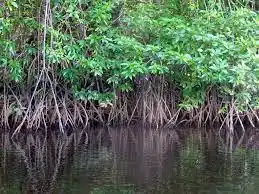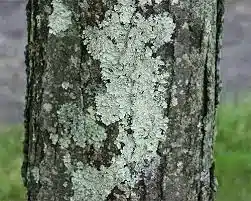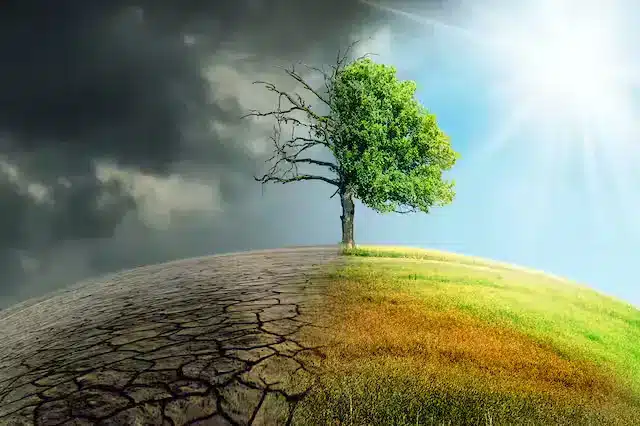Know About Ecology
- The term ecology was derived from two Greek words ‘Oikos’ meaning home and ‘logos’ meaning study.
- The study of the interactions between living things and their environments is known as ecology.
- In ecology, everything is connected to everything else and there is a constant interaction between organisms and their environment.
- The main three constituents of ecology are the following-
- Interactions and relationships with the surrounding environment
- Interactions and relationships with other organisms
- Living organisms
Environment vs Ecology
| Environment | Ecology |
| Environment refers to the interaction between the physical, chemical and biological components. | Ecology is the study of the relationship between organisms and their environment. |
| The environmental issues include pollution, deforestation, global warming, and other broader issues. | The ecological issues include population size, diversity, distribution of organisms, and competition between them. |
| Studies the internal and external factors affecting the environment. | Aims to understand life processes, distribution, adaptation and biodiversity. |
Levels of Organizations in Ecology
- Ecology encompasses the study of individual, organisms, population, community, ecosystem, biome and biosphere which form the various levels of ecological organisation.
Individual and Species
- Organism is an individual living being that has the ability to act or function independently.
- Species refers to a group of living organisms consisting of similar individuals capable of exchanging genes or of interbreeding.
- Species is considered as the basic unit of taxonomy and are denoted by a Latin binomial, e.g. Homo sapiens.
Population
- Population refers to a group of individuals that belong to the same species and that are interbreeding.
- Population is considered to be the smallest ecological unit.
- Population growth rate can be positive due to birth and/or immigration or negative due to death and/or emigration.
Community
- A community refers to all the populations in a specific area at a certain time. There are two essential things which make a group of populations eligible to be called community. These are interaction and inter-dependence for nutrition, food or other resources.
- Communities in most instances are named after the dominant plant form.
- For example, a grassland community is dominated by grasses, though it may contain herbs, trees, etc.
Ecosystem
- An ecosystem is community plus its physical environment.
- Thus, ecosystem is a complex community of living plants, animals, and microorganisms(called biotic components of ecosystem) linked by energy and nutrient flows that interact together and their physical environment (called abiotic component of ecosystem) such as soil, air, water, sunlight etc.
- An ecosystem is the smallest functional ecological unit.
- An ecosystem is a community of organisms interacting with each other and with their environment such that energy is exchanged and system-level processes, such as the cycling of elements, emerge.
Biome
- Biomes are group of ecosystems that share similar climatic conditions and same kind of abiotic and biotic factors spread over a large area.
- Plants and animals in a biome have common characteristics due to similar climates and can be found over a range of continents.
- Biomes are distinct from habitats because any biome can comprise a variety of habitats.
Biosphere
- Biosphere is the entire part of the earth where living things exist. This includes soil, water, light, and air. The word Biosphere includes sum total of life and life-support systems Viz. atmosphere, hydrosphere, lithosphere, and pedosphere.

Principles of Ecology
Adaptation
- An adaptation is, “the appearance or behaviour or structure or mode of life of an organism that allows it to survive in a particular environment”.
Adaptation may be:
- Morphological – when trees grew higher, the giraffe’s neck got longer;
- Physiological – in the absence of an external source of water, the kangaroo rat in North American deserts is capable of meeting all its water requirements through its internal fat oxidation (in which water is a by-product). It also has the ability to concentrate its urine so that minimal volume of water is used to remove excretory products;
- Behavioural – animals migrating temporarily to a less stressful habitat.
Examples of Adaptation
- Many desert plants have a thick cuticle on their leaf surfaces and have their stomata arranged in deep pits to minimise water loss through transpiration.
- Some desert plants like Opuntia, have no leaves – they are reduced to spines, and the photosynthetic function is taken over by the flattened stems (few leaves mean less area is available for transpiration).
- Mammals from colder climates generally have shorter ears and limbs to minimise heat loss. (This is called Allen’s Rule.) Guess why an elephant has huge ears?
- We need to breathe faster when we are on high mountains. After some days, our body adjusts to the changed conditions on the high mountain.
- Such small changes that take place in the body of a single organism over short periods, to overcome small problems due to changes in the surroundings, are called acclimatisation.
- The body compensates low oxygen availability by increasing red blood cell production, decreasing the binding capacity of haemoglobin and by increasing breathing rate.
- A hyperthermophile is an organism that thrives in extremely hot environments — from 60 °C. E.g. Archaebacteria flourish in hot springs and deep-sea hydrothermal vents.
- Desert lizards lack the physiological ability that mammals have. They bask in the sun and absorb heat when their body temperature drops but move into the shade when the ambient temperature starts increasing.
- Some species are capable of burrowing into the soil to hide and escape from the above-ground heat.
Variation
- Variations are induced by changes in genetic makeup due to addition or deletion of certain genes.
- Mutations, change in climate, geographical barriers etc. induce variations over a period of time.
- The difference in the colour of skin, type of hair; curly or straight, eye colour, blood type among different ethnic groups represents variation within human species.
Adaptive radiation
- Adaptive radiation is a process in which organisms diversify from an ancestral species into a multitude of new forms when the environment creates new challenges or opens new environmental niches.
Speciation
- Speciation is the process by which new species are formed, and evolution is the mechanism by which speciation is brought about.
- A species comprises of many populations. Often different populations of a species remain isolated due to some geographic barrier such as mountain, ocean, river, etc.
- Geographic isolation leads to speciation (allopatric speciation or geographic speciation).
- After a long period of time, the sub-populations become very different (genetic drift) and get isolated, reproductively, i.e. they no longer interbreed.
- Later even when the barrier is removed, the sub-populations are unable to interbreed, and thus subsequently the sub-populations become two different species.
Mutation
- Mutation (a change in genetic material that results from an error in replication of DNA) causes new genes to arise in a population.
- Further, in a sexually reproducing population, meiosis and fertilisation produce a new combination of genes every generation, which is termed recombination.
- Thus, members of the same species show ‘variation’ and are not identical.
Natural Selection
- Natural Selection is the mechanism proposed by Darwin and Wallace.
- Natural selection is the process by which species adapt to their environment.
- It is an evolutionary force that selects among variations, i.e. genes that help the organism to better adapt to its environment. Such genes are reproduced more in a population due to natural selection.
- Those offsprings which are suited to their immediate environment have a better chance of surviving, reaching reproductive age and passing on the suitable adaptations to their progeny.
Evolution
- Evolution is the change which gives rise to new species.
- It happens in order to make the organism better suitable to the present environment.
- Evolution involves the processes of natural selection, adaptation, variation etc.
- A valid theory of evolution was propounded by Charles Darwin and Alfred Wallace in 1859.
- This theory has been extended in the light of progress in genetics and is known as Neo-Darwinism.
Extinction
- The primary reason behind extinctions is environmental change or biological competition.
- Extinction occurs when species cannot evolve fast enough to cope with the changing environment.
- At present, the 6th Mass Extinction (Anthropogenic Extinction – human induced) is in progress.
Also refer :
- Download the pdf of Important MCQs From the History Of Ancient India
- List Of Important Inscriptions In India
- For more articles on environment, click here.








